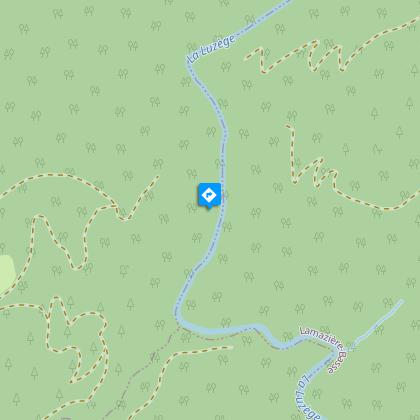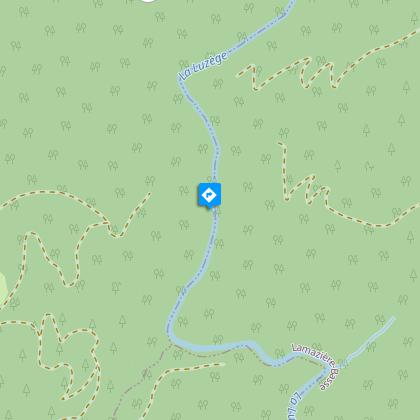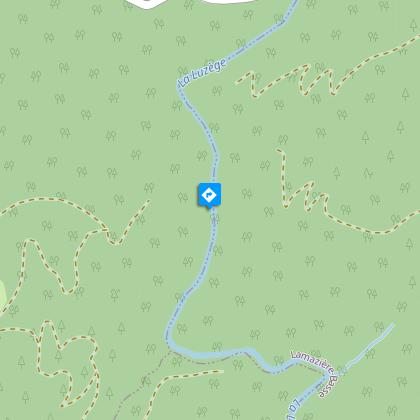Alert
Alerts
Job, at the gates of Luzège

IGN cards
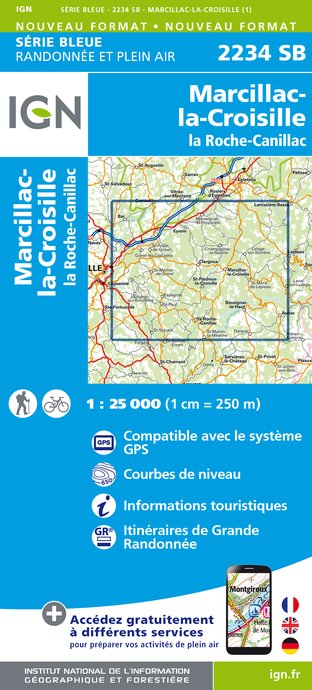
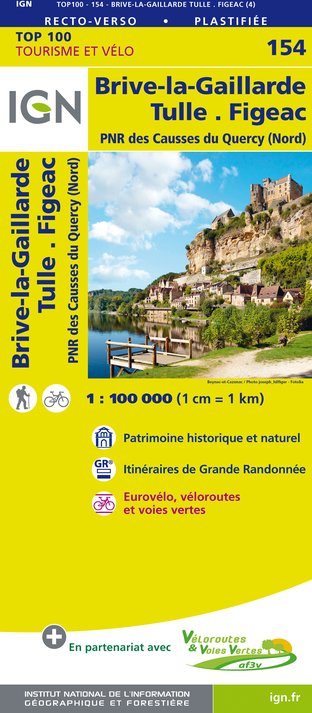
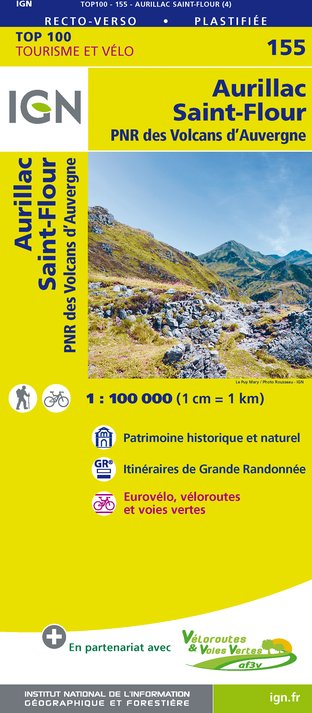




Description
This circuit offers you an immersion in the wild gorges of the Luzège.At the entrance to the hamlet, take the road to the right road behind a barn (on the gable of which an inserted cross inserted bears the inscription "I.H.S", "Iesa Homines Salvator", "Jesus the Saviour of Men"). The road becomes a path and passes to the left of a ruined house. Continue between the meadows.Where the paths intersect, take the one on the left. It goes down into the gorges (the meadows of the plateau attract many animals who take refuge in the gorges and come to eat at nightfall) and arrives on a flat ledge.Continue by the track on the right to go down to the bottom of the gorges. Well marked at first, it then runs alongside a stream which is often dry in summer (follow the markings carefully; at the foot of the gorges, the hornbeam replaces the beech; the leaves being out of reach, its grooved and bumpy bark makes it possible to differentiate it from beech) and reaches the edge of the Luzège.Use the fishermen's trail either upstream or downstream (enjoy the freshness, the wild and green universe of the gorges; the sandy areas along the shoreline capture many animal tracks: deer, wild boars, roe deer and otters pass through here). Go back up by the same path.Back on the flat, go straight up the path to Job and arrive at the plateau. Turn left, walk alongside a field, and continue by the road that leads to the entrance of the hamlet.
Technical Information
Altimetric profile
Starting point
Steps
Points of interest
Additional information
Advised parking
On the right, before the entrance to the village, Job
Advice
Circuit à ne pas entreprendre en période de crue (cours d’eau violent).
Access
12 km southeast of Egletons on the D16, D62E, the Peuch road on the left after the bridge (south of the village) and the Job road on the left.
Ambiance
It is at the bottom of the gorges of the Luzège, where nature has regained its rights, that the word "wild" takes on its full meaning. Allow yourself be guided alongside the water, thanks to the fishermen's path, at the foot of hundred-year-old trees, in the footsteps of the otter...
Arrival
Village entrance, Job
Departure
Village entrance, Job
